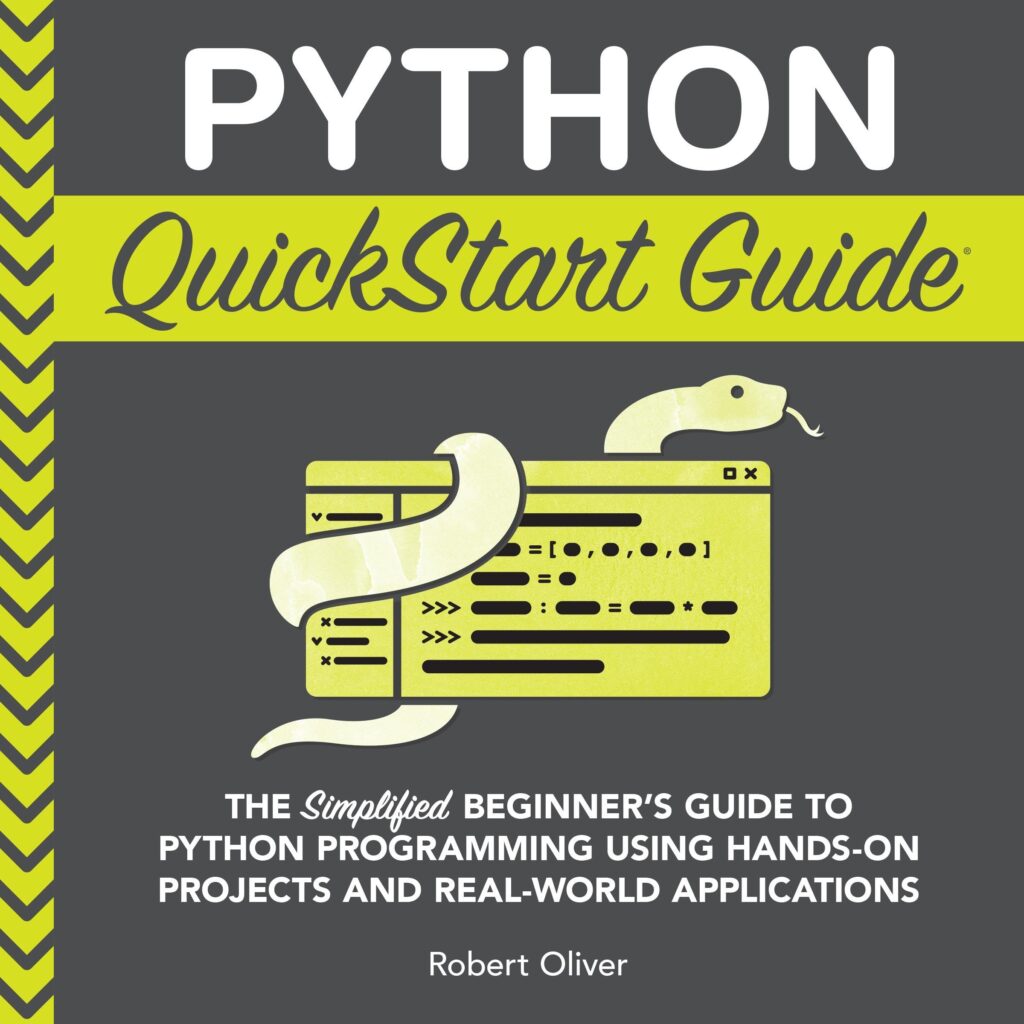
The numpy.set_printoptions function in NumPy is a powerful utility for customizing how arrays are displayed in the output. By default, NumPy provides a general array representation that works sufficiently for most applications. However, when working with larger or more complex arrays, the need for clearer or more tailored output often arises.
This function allows you to configure various aspects of array representation, including precision, formatting, and truncation settings. Any changes made to the print options will affect all subsequent array displays until the options are reset or modified. This can be particularly useful during debugging or when presenting arrays in a more readable format, especially in scientific computing and data analysis tasks.
The numpy.set_printoptions function can take several parameters to control the output format of NumPy arrays. For instance, you can adjust the precision of floating-point numbers, choose to display scientific notation for large values, or specify whether arrays should be printed in full or truncated form.
Here’s a basic example of how to use numpy.set_printoptions to set custom print options:
import numpy as np # Create an array array = np.array([[1.23456789, 2.3456789], [3.456789, 4.56789]]) # Set print options to display fewer decimal places np.set_printoptions(precision=3) # Print the array print(array)
Amazon Fire HD 8 tablet (newest model), 8” HD Display, 3GB memory, 32GB, designed for portable entertainment, Black
$99.99 (as of December 9, 2025 08:57 GMT +00:00 - More infoProduct prices and availability are accurate as of the date/time indicated and are subject to change. Any price and availability information displayed on [relevant Amazon Site(s), as applicable] at the time of purchase will apply to the purchase of this product.)Default Print Options in NumPy
By default, NumPy’s print options are set to ensure that arrays are displayed in a way that balances readability and detail. When you create and print a NumPy array without modifying any print options, the output is typically formatted to provide a clear view of the data while preserving sufficient precision for numerical accuracy.
The default settings include:
- The default precision for floating-point numbers is set to 8 decimal places.
- NumPy will print up to 1000 elements in total. If the number of elements exceeds this threshold, it will truncate the output.
- When displaying a truncated array, NumPy shows the first and last 3 elements by default, allowing for a glimpse of the data without overwhelming the user.
- Scientific notation will be used by default for very large or very small numbers that exceed the defined precision limits.
This default behavior is appropriate for many applications, as it provides a concise representation of the array’s contents. However, it may not always meet specific needs, particularly when users are looking for more tailored representations or when arrays are exceedingly large. In these cases, developers can use numpy.set_printoptions to adjust the formatting as desired.
Here’s an example demonstrating the default print behavior of NumPy:
import numpy as np # Create a larger array large_array = np.random.rand(10, 10) * 1000 # 10x10 array with random values between 0 and 1000 # Print the default array representation print(large_array)
Common Parameters to Customize
The numpy.set_printoptions function provides several common parameters that users can customize to imropve the readability of NumPy arrays in their output. Understanding how these parameters work is essential for effectively presenting array data. Below are some of the key parameters available for customization:
- This parameter controls the number of decimal places displayed for floating-point numbers. By default, it’s set to 8, but it can be adjusted to achieve the desired level of detail.
- The number of elements that will be printed in total. If the total number of elements in the array exceeds the threshold, NumPy will truncate the output to prevent overwhelming the user. The default value is 1000.
- When arrays are truncated, this parameter defines how many elements at the beginning and the end of the array will be displayed. By default, it shows 3 elements from each end.
- This parameter determines the number of characters per line of output. If the width of the output exceeds this line length, NumPy will wrap the output to the next line.
- When set to
True, this parameter suppresses the use of scientific notation for small numbers. That is useful for displaying very small values in a non-scientific format. - This allows users to specify custom formatting for specific types of data. It can take a dictionary that maps data types to formatting functions.
- This parameter controls whether or not to display the sign of floating-point numbers. The options are
‘’-‘’(the default) or‘’+’to always show the sign.
To see these parameters in action, think the following example:
import numpy as np # Create an array with both positive and negative values array = np.array([1.123456789, -2.987654321, 3.456789123, -4.567890123]) # Customize print options np.set_printoptions(precision=3, suppress=True, linewidth=50) # Print the array print(array)
Formatting Floating Point Numbers
Floating point numbers are a central aspect of numerical computing, and their representation can significantly impact the readability of output generated by NumPy. Customizing the way floating-point numbers are displayed is essential, especially when precision and formatting play a vital role in data analysis and reporting. Using numpy.set_printoptions, you can control various attributes related to the formatting of these numbers, which can greatly enhance the clarity of your output.
The precision parameter is key when formatting floating-point numbers. It defines the number of decimal places to which the numbers are rounded for display. By default, NumPy displays floating-point numbers with 8 decimal places, which may sometimes be excessive or insufficient depending on the specific context. Adjusting the precision can make your array outputs cleaner and easier to interpret.
Another helpful aspect of formatting is the use of the suppress parameter, which, when set to True, prevents NumPy from using scientific notation for small floating-point numbers. That is particularly useful when dealing with values that are extremely small or where maintaining an ordinary decimal format is more appropriate for the data being presented.
Additionally, you can format individual array elements using the formatter parameter, enabling you to define specific rules for different data types, including floating-point numbers. This allows for a higher degree of customization, catering to specific needs or preferences in data presentation.
Here’s an illustrative example demonstrating how to format floating-point numbers by manipulating the precision and suppressing scientific notation:
import numpy as np # Create an array of floating-point numbers float_array = np.array([0.000123456, 123.456789, 9876543.21, -0.00000123456]) # Customize print options np.set_printoptions(precision=4, suppress=True) # Print the array print(float_array)
In this example, the floating-point numbers in float_array are displayed with a precision of 4 decimal places, and scientific notation is suppressed for very small values. The output will reflect these settings:
[ 0.0001 123.4568 9876543.2100 -0.0000]
Controlling Array Display Precision
Controlling the display precision of NumPy arrays very important when working with data that requires a specific level of numerical accuracy. The precision parameter in the numpy.set_printoptions function allows you to dictate how many decimal places are shown for floating-point numbers in your arrays. By setting an appropriate precision, you can achieve a cleaner output that focuses on the most significant digits relevant to your analysis or presentation.
When dealing with large datasets where numerical values can differ vastly in magnitude, it’s often beneficial to fine-tune how these numbers are displayed. For instance, if the precision is excessively high, it might lead to cluttered output, making it challenging to extract meaningful insights. Conversely, too low a precision might obscure important details.
The adjustment of precision can also be critical in domains like scientific computing, finance, or engineering, where specific values play a significant role in calculations or reporting. By tailoring precision, users can focus on the relevant figures without being distracted by insignificant digits.
Here’s an example that illustrates how to control the display precision using numpy.set_printoptions:
import numpy as np # Create an array with various floating-point values data = np.array([0.123456789, 1.23456789, 12.3456789, 123.456789]) # Set custom print options to control display precision np.set_printoptions(precision=2) # Print the array print(data)
This example demonstrates how you can set the precision to 2 decimal places. The output of the array will be:
[ 0.12 1.23 12.35 123.46]
As shown, all numbers in the array are rounded to two decimal places, enhancing readability. This precision control is particularly helpful when presenting results to stakeholders who may only need to see outputs rounded to an acceptable number of significant digits.
Furthermore, controlling precision in conjunction with other parameters can yield even more tailored results. For instance, if you are working on a presentation of financial data, you may want to both set the precision and suppress scientific notation to maintain consistency and clarity across all array elements.
# Create a financial array with high variance in scale financial_data = np.array([0.000123456, 1234.56789, 9876543.21, -0.00000123456]) # Customize print options to control display precision and suppress scientific notation np.set_printoptions(precision=3, suppress=True) # Print the array print(financial_data)
In this case, the output will look like this:
[ 0.000 1234.568 9876543.210 -0.000]
Impact on Large Arrays and Truncation
When working with large arrays in NumPy, it is important to be mindful of how the output is displayed, especially when the number of elements exceeds the threshold set by default parameters. By default, NumPy is configured to mitigate clutter and improve readability, which often results in truncation of the displayed array. Specifically, when an array contains more than 1000 elements, NumPy will only show a subset of the elements, leading to the display of a few leading and trailing elements while the rest are omitted.
This truncation serves an important purpose: it prevents overwhelming the user with excessive data, allowing for a focused interpretation of the most relevant parts of the array. However, in scenarios where you need to analyze the complete data set or need more insight into the array’s contents, this default behavior can be a limitation. In such cases, customizing the output through numpy.set_printoptions can enhance the display by either increasing the threshold or adjusting how the array is presented.
Here’s an example with a large array that demonstrates the default truncation:
import numpy as np # Create a large array with 2000 random values large_array = np.random.rand(2000) # Print the array to observe the default truncation behavior print(large_array)
In the output, you will likely see something similar to the following:
[0.407 0.912 0.199 … 0.482 0.463 0.147]
The ellipsis (“…”) indicates that most of the elements in the array are omitted from the display. While this output provides a glance at the first three and last three elements of the array, it does not give insight into the complete data structure, which might be necessary for in-depth analysis or debugging purposes.
To counteract this truncation and review all the elements in the array, you may opt to change the threshold parameter in the numpy.set_printoptions function. By increasing the threshold, you allow a greater number of elements to be printed before truncation occurs:
# Set print options to increase the threshold for elements printed np.set_printoptions(threshold=2000) # Print the same large array print(large_array)
Now, when you print large_array, you will be able to see all 2000 elements in the output, without being truncated. However, it’s important to balance between displaying all values and maintaining a manageable output size, depending on the context in which you are working.
Another route for visually simplifying complex data without changing the threshold is to adjust the edgeitems parameter. This parameter controls how many items from the beginning and the end of a truncated array are displayed. By modifying this parameter, you can provide a more tailored view of your array’s content:
# Set the number of edge items displayed to 5 np.set_printoptions(edgeitems=5) # Print the array again print(large_array)
Practical Examples and Use Cases
import numpy as np # Create an example array example_array = np.arange(20).reshape(4, 5) # Set multiple print options for enhanced readability np.set_printoptions(precision=2, suppress=True, linewidth=50) # Print the example array print(example_array)
In this example, the array is printed with a precision of 2 decimal places, and scientific notation is suppressed. The output will be a readable grid of numbers considering your specified line width. Here’s how the output will appear:
[[ 0. 1. 2. 3. 4.] [ 5. 6. 7. 8. 9.] [10. 11. 12. 13. 14.] [15. 16. 17. 18. 19.]]
This neat representation is particularly useful during initial data exploration, allowing quick assessments of the contents of the array.
Think a scenario where you may want to analyze the results of a simulation yielding large arrays. Using customized print settings can facilitate detailed reporting. For instance:
# Simulated data for a scientific experiment results = np.random.rand(1000) * 100 # Set print options for better clarity np.set_printoptions(precision=4, threshold=1000, edgeitems=5, suppress=True) # Print the results print(results)
The output will show up to 1000 elements, displayed with four decimal places:
[ 1.2345 2.3456 ... 98.7654 99.8765]
This kind of output maintains a balance between revealing the majority of the data while keeping the presentation clear and simple.
Another practical example can be seen in data analysis tasks where specific formatting might be necessary to afford insight into key figures, such as during data reporting. For instance:
# Create financial data for analysis
financial_data = np.array([123456.789, 987654.321, 0.0003456789, -12345.6789])# Set custom options for financial reporting
np.set_printoptions(precision=2, suppress=True)












